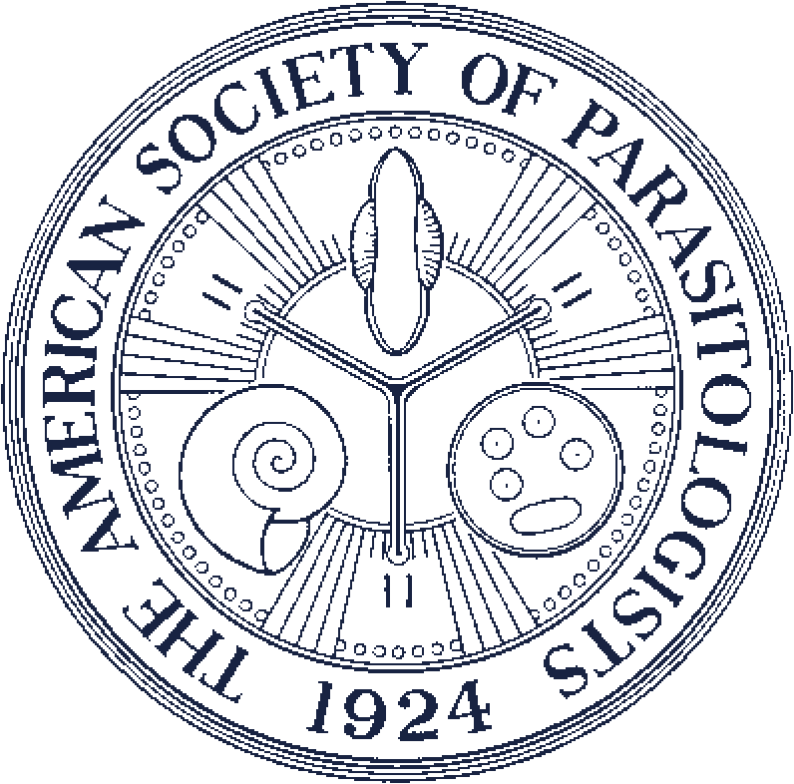GREGARINA LUTESCENS N. SP. INFECTING THE HARLEQUIN LADYBIRD HARMONIA AXYRIDIS (COLEOPTERA: COCCINELLIDAE)
Gregarina lutescens n. sp. is described from the alimentary canal of the harlequin ladybird or multicolored Asian lady beetle, Harmonia axyridis (Coleoptera: Coccinellidae) collected from prairie fleabane, Erigeron strigosus, at Peru State College, Peru, Nemaha Co., Nebraska. Our specimens differ from all 11 known species of Gregarina infecting coccinellid beetles worldwide by differences in size and relative shape, color, and association structure. Gregarina lutescens n. sp. is smaller than 7 known species infecting coccinellid beetles but larger than the other 4 known species based on confidence interval exclusion of means. Our specimens are unique among known species of interest in their quince-yellow cytoplasm and precocious but ephemeral serial associations of up to 5 satellites. Nucleotide sequence (18S) phylogenetic analyses place the new species basal to a member of an internal clade of Gregarina that comprises gregarines parasitizing chrysomelid beetles. Phylogenetically, the analysis recovered 3 major lineages within the gregarines, representing the superfamilies Gregarinoidea, Stenophoroidea, and Stylocephaloidea and indicating the propensity of gregarines to track host lineages and environments through evolutionary time. These findings confirm the polyphyletic nature of Gregarina, which currently comprises over 300 described species, only a handful of which have documented genetic sequences suitable for phylogenetic analysis. Recollection, redescription, and molecular clarification of gregarine species infecting coccinellids would likely result in identification of a unique clade that would be an excellent system for studying the effect of intraguild host competition on parasite diversification and community structure. Ecologically, patterns of prevalence in this study indicate that G. lutescens reproduces primarily in larval hosts but depends on infections in adult beetles to overwinter, reflecting the differential vagility and frost tolerance of larval and adult host life cycle stages.ABSTRACT

Morphometric character set for gamonts and oocysts of Gregarina species. (1) Generalized gamont characters mapped on the primite and satellite of Gregarina lutescens in association. (2) Oocyst chain of G. lutescens. (3) Oocyst characters of G. lutescens. DL, deutomerite length; DW, deutomerite width at widest transect; NL, nucleus length parallel to axis of deutomerite; NW, nucleus width perpendicular to axis of deutomerite; OL, oocyst length; OW, oocyst width; P, primite; PDSW, protomerite-deutomerite septum width; PL, protomerite length; PW, protomerite width at widest transect; S, satellite; TL, total length.

Photomicrographs of Gregarina lutescens n. sp. (4, 5) Immature trophozoites with epimerites. (Semichon’s acid carmine [SAC], differential interference contrast [DIC]). (6–10) Precocious associations varying from biassociative to temporary serial associations of up to 5 satellites (SAC, DIC). (11–17) Mature associations (SAC, DIC). (18) Fresh gametocyst in saline showing the membrane separating gamonts and expanded hyaline layer surrounding gametocyst (light). (19) Gametocysts cleaned of frass before incubation for maturation and dehiscence (light). (20, 21) Oocysts in saline monolayer showing the shape of oocysts, connection into monete chain, and internal sporozoites with residua (DIC).

Placement of Gregarina lutescens n. sp. in an 18S-based maximum-likelihood phylogenetic analysis of a 1,533-base pair alignment of 28 gregarine species. Multiple samples representing Stenophoroidea (millipede-hosted gregarines) and Stylocephaloidea (tenebrionid beetle–hosted gregarines) served as outgroups. Nodal support numbers include 2 values, a Bayesian approximate likelihood ratio test followed by a 5,000-replicate bootstrap. Black circles on nodes indicate absolute support by both metrics. Superfamily groups are indicated by labeled boxes. The nodal asterisk indicates the split between an upper coleopteran-hosted gregarine clade and a lower orthopteran-based gregarine clade within Gregarinoidea.

Host-parasite associations for 14 species of Gregarina infecting 43 species of ladybird beetles (Coleoptera: Coccinellidae). Accepted names below are intercalated with host names listed in the original reports; synonymous generic combinations are presented in brackets and synonymous species in parentheses. Adalia [= Coccinella] bipunctata, Adalia [= Coccinella] decempunctata, Ceratomegilla [= Adonia, = Semiadalia] undecimnotata, Cheilomenes [= Cydonia] propinqua, Chelomenes sulfurea, Chilocorus bipustulatus, Chilocorus rubidus, Chilocorus stigma, Chnootriba [= Epilachna] connectens, Coccinella californica, Coccinella novemnotata, Coccinella quinquepunctata, Coccinella septempunctata, Coccinella trifasciata, Epilachna [= Solanophila] novemdecimguttata, Exochomus flavipes, Exochomus nigripennis, Exochomus quadripustulatus, Harmonia quadripuncta, Henosepilachna [= Epilachna] alternata, Henosepilachna [= Epilachna] apicalis, Henosepilachna [= Epilachna] humerosa, Henosepilachna [= Solanophila] kaffaensis, Henosepilachna [= Epilachna] lucifera, Henosepilachna [= Epilachna] ruvenzorica, Henosepilachna [= Epilachna] scutellaris, Henosepilachna [= Epilachna] vigintioctomaculata, Hippodamia convergens, Hippodamia sinuata, Hippodamia tredecimpunctata, Hippodamia [= Adonia] variegata, Micraspis [= Verania] discolour, Myrrha octodecimguttata, Papuaepilachna [= Epilachna] annulata, Pharoscymnus setulosus (= Pharoscymnus anchorago), Platynaspis capicola (= Pharoscymnus semiglobosus), Propylea [= Coccinella] quatuordecimpunctata, Psyllobora [= Thea] bisoctonatata, Solanophila gibbosa, Solanophila [= Solanophila] karisimbica (= Solanophila apicornis), Synharmonia [= Oenopia] conglobata, Tytthaspis [= Tytthaspis] sedecimpunctata. Data from Watson, 1915, 1916; Foerster, 1938; Obata, 1953; Delucchi, 1954; Mader, 1957; Hoshide, 1958, 1980; Théodoridès and Jolivet, 1959; Lipa, 1967, 1968; Geus, 1969; Laudého et al., 1969; Mandal et al., 1986; Levine, 1988; Datta et al., 1991; Kuznetsov, 1997; Matis and Valigurová, 2000; Seck, Sall-Sy, and Diarra, 2002 in Desportes and Schrével, 2013: Desportes and Schrével, 2013; Devetak et al., 2013; Dudek et al., 2017.
Contributor Notes
Version of Record, first published online with fixed content and layout, in compliance with ICZN Arts. 8.1.3.2, 8.5, and 21.8.2 as amended, 2012. ZooBank publication registration: urn:lsid:zoobank.org:pub:ABD963FD-8CFF-4B94-924C-B347B16DB4CC.
